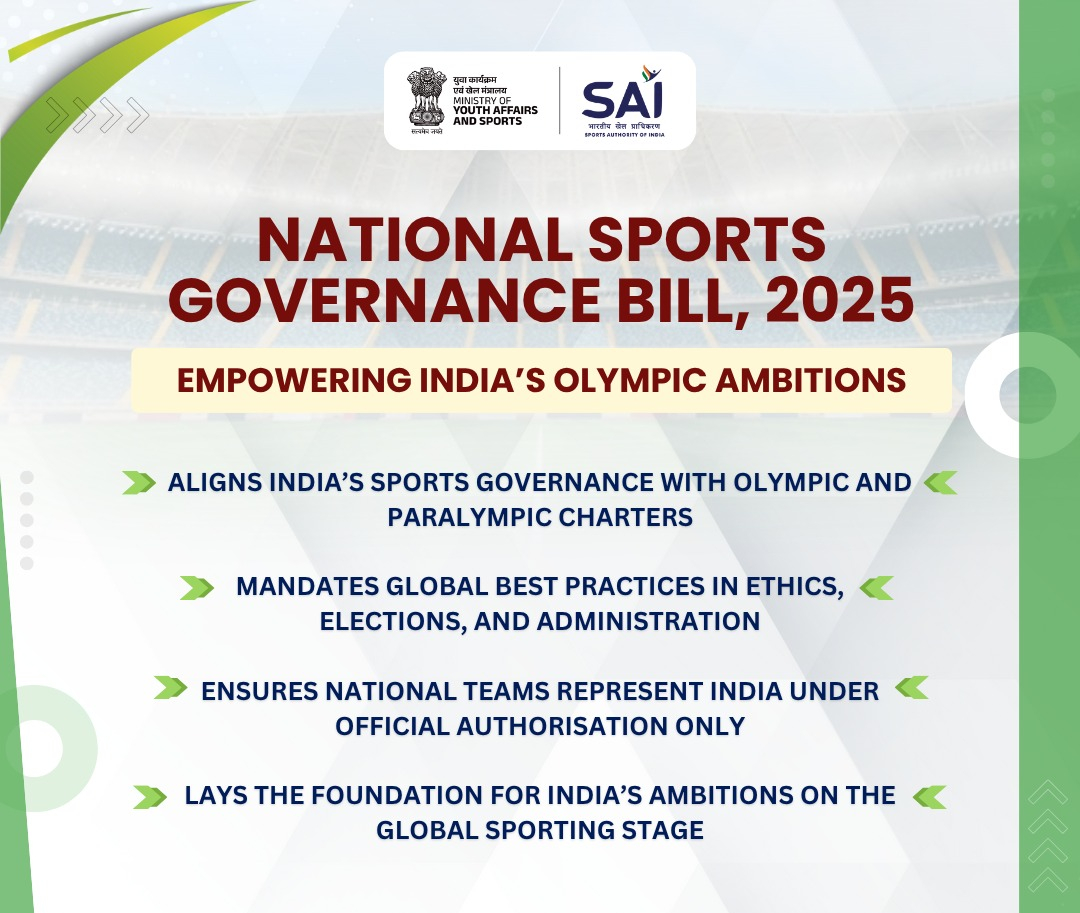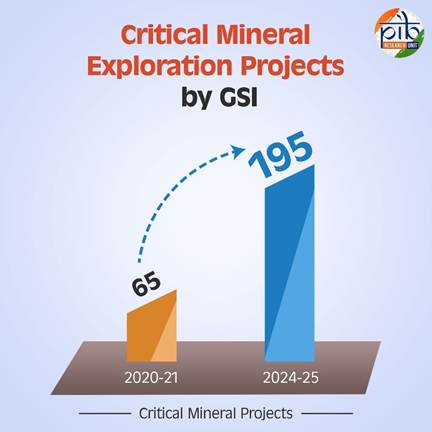HOPS-315 Discovery

- 26 Jul 2025
In News:
Astronomers, for the first time, have observed solid rock condensation from vapor around a newborn protostar, HOPS-315, located in the Orion Molecular Cloud. This breakthrough offers unprecedented insight into the earliest stages of rocky planet formation, similar to how Earth likely formed.
About HOPS-315
- Type: Protostar (young, still-forming star)
- Location: Orion constellation (~1,300 light-years from Earth)
- Key Feature: Surrounded by a tilted protoplanetary disc of dust and gas, allowing deep observational access to its planet-forming region.
Instruments & Research Collaboration
- Telescopes Used:
- James Webb Space Telescope (JWST) – Spectral analysis via NIRSpec and MIRI instruments.
- Atacama Large Millimeter/submillimeter Array (ALMA) – Millimeter-wavelength mapping of gases and dust.
- Research Consortium: Scientists from France, the Netherlands, Sweden, Taiwan, and the USA.
- Published In: Nature (2025)
Key Observations & Findings
- Crystallization Process:
- Initial heating vaporizes dust (~1300 K near 1 AU from star).
- Subsequent cooling condenses vapor into refractory minerals (e.g., forsterite, enstatite, silica).
- Spectroscopic Evidence:
- Silicon monoxide (SiO) gas detected at ~470 K.
- Presence of crystalline silicates within 2.2 AU of the star — the zone where rocky planets typically form.
- ALMA Findings:
- Cooler gas in outer disc.
- Absence of slow SiO outflows confirms crystals are part of the disc atmosphere — not stellar jets.
Why It Matters
|
Significance |
Explanation |
|
First-Ever Observation |
Direct evidence of solid rock condensing from vapor around a protostar. |
|
Planet Formation Insight |
Confirms the earliest phase of rocky planet creation — from vapor to mineral solidification. |
|
Solar System Parallel |
Chemistry mirrors early Earth meteorites, suggesting universal mechanisms in rocky planet formation. |
|
Rare Viewing Geometry |
Tilted disc of HOPS-315 provided rare access to inner disc regions, usually obscured in other systems. |
National Sports Governance Bill 2025

- 26 Jul 2025
In News:
The National Sports Governance Bill, 2025, introduced in the Lok Sabha, marks a significant legislative effort to restructure and reform India's sports administration framework. It seeks to replace the non-binding National Sports Code of 2011 with a statutory, enforceable law that prioritizes transparency, athlete welfare, and institutional accountability.
Key Objectives of the Bill
- Establish a uniform governance system across all sports federations.
- Legally regulate bodies like the Board of Control for Cricket in India (BCCI).
- Align Indian sports governance with international standards, particularly ahead of India’s 2036 Olympic bid.
- Introduce dedicated institutions for oversight, dispute resolution, and electoral transparency.
Major Structural Changes
1. Statutory Institutions Established
|
Institution |
Function |
|
National Sports Board (NSB) |
Recognition, funding eligibility, ethics compliance, and oversight of NSFs. |
|
National Sports Tribunal |
Dispute resolution (e.g., selection, elections, governance conflicts). |
|
National Sports Election Panel |
Ensures free, fair, and independent elections of sports bodies. |
Governance Reforms in National Sports Bodies
- Recognition & Regulation: All National Sports Federations (NSFs), including the BCCI, must seek annual recognition from the NSB.
- Affiliation: National bodies must have aligned state and district units, and comply with international federations' statutes.
- Code of Ethics: Mandatory for members, athletes, coaches, sponsors, and officials.
- Grievance Redressal: Internal mechanisms must be instituted by each federation.
Administrative Structure of National Bodies
- General Body: Equal representation from all affiliates and ex-officio members.
- Executive Committee: Maximum 15 members, mandatory inclusion of at least 4 women and 2 elite athletes.
- Age Limit: Officials must be aged 25–70 years (exceptions up to 75 years if permitted by international rules).
- Term Limit: Max three consecutive terms of four years in the same or different posts, with a cooling-off period.
Role of the National Sports Board (NSB)
The NSB acts as a central regulatory authority, similar to SEBI in financial markets.
Powers and Functions:
- Granting/suspending/canceling recognition of sports bodies.
- Investigating misuse of funds or violation of athlete welfare norms.
- Issuing guidelines for ethics, governance, and international compliance.
- Forming ad-hoc bodies in case of international de-recognition.
Composition: Chairperson and members with expertise in sports governance, law, and public administration. Appointed by the central government through a search-cum-selection committee.
National Sports Tribunal
A quasi-judicial body to resolve disputes involving federations, athletes, and administration.
Composition:
- Chairperson: Sitting/former Supreme Court Judge or Chief Justice of a High Court.
- Two expert members from sports, law, or public administration.
Appointed by: A committee comprising the Chief Justice of India (or nominee), the Law Secretary, and the Sports Secretary.
Appeals: Lie directly to the Supreme Court, except where international regulations mandate the Court of Arbitration for Sport (CAS) in Switzerland.
Jurisdiction Excludes: Disputes related to international sports events and internal matters of global sports bodies.
Electoral Oversight
A National Sports Election Panel will be constituted, comprising:
- Former Election Commissioners of India
- Former Chief Electoral Officers and Deputy Election Commissioners
Purpose:
- Supervise elections of executive committees of national federations.
- Ensure electoral integrity at the state and district levels via affiliate panels.
Legal Enforceability vs. Sports Code 2011
|
Parameter |
Sports Code 2011 |
Governance Bill 2025 |
|
Legal Status |
Advisory guidelines |
Statutory law |
|
Enforceability |
Non-binding |
Legally enforceable |
|
Gender/Athlete Representation |
Not mandated |
4 women & 2 elite athletes required |
|
Dispute Resolution |
Ministry-driven |
National Sports Tribunal |
|
BCCI Regulation |
Outside purview |
Brought under framework |
|
Election Oversight |
Ministry oversight |
Independent election panel |
|
RTI Applicability |
Exempt (BCCI) |
Mandatory for recognized bodies |
Bringing BCCI Under the Legal Framework
Historically resisting regulation, the BCCI will now be required to:
- Register annually with the NSB.
- Submit to the National Sports Tribunal for disputes.
- Comply with RTI Act provisions, if it seeks government recognition and funding.
This change is significant as cricket is now part of the 2028 Los Angeles Olympics, making BCCI subject to international governance norms under the Olympic Charter.
Provision for Exemptions
The central government may exempt specific sports bodies from certain provisions of the Bill, in the public interest or for the promotion of specific sports disciplines.
Parallel Legislation: Anti-Doping Amendment
The National Anti-Doping (Amendment) Bill, 2025 was also introduced, addressing World Anti-Doping Agency (WADA) concerns. It:
- Retains the National Board for Anti-Doping, but strips it of oversight over NADA.
- Restores NADA’s independence, aligning Indian anti-doping efforts with international norms.
Henley Passport Index 2025
- 26 Jul 2025
In News:
The Henley Passport Index 2025 reveals significant shifts in global mobility, highlighting increased visa-free access for citizens worldwide. India has made notable progress in the latest rankings, climbing eight places to reach the 77th position, up from 85th in 2024. Indian passport holders can now access 59 countries without a prior visa.
What is the Henley Passport Index?
The Henley Passport Index is a global ranking of passports based on the number of destinations their holders can enter without a visa or with visa-on-arrival. It is compiled by Henley & Partners using data from the International Air Transport Association (IATA). The index, started in 2006, now covers 199 passports and 227 travel destinations.
India’s Passport Performance:
- Current Rank (2025): 77th
- Visa-Free Access: 59 countries
- Previous Rank (2024): 85th
- Lowest Rank: 90th in 2021
- Best Rank: 71st in 2006
India's improved standing reflects enhanced global engagement and evolving diplomatic relations. However, it still trails far behind leading Asian and Western nations in terms of travel freedom.
Top 10 Most Powerful Passports (2025):
- Singapore – 193 visa-free destinations
- Japan, South Korea – 190 destinations
- Germany, France, Italy, Spain, Ireland, Denmark, Finland – 189 destinations
- Sweden, Austria, Belgium, Portugal, Netherlands, Luxembourg, Norway – 188 destinations
- Greece, Switzerland, New Zealand – 187 destinations
- United Kingdom – 186 destinations
- Australia, Czechia, Poland, Malta, Hungary – 185 destinations
- Canada, Estonia, United Arab Emirates (UAE) – 184 destinations
- Croatia, Latvia, Slovakia, Slovenia – 183 destinations
- United States, Iceland, Lithuania – 182 destinations
Note: The UAE is the only significant climber in the top 10, jumping from 42nd to 8th over the past decade.
Bottom 10 Least Powerful Passports (2025):
99. Afghanistan – 25 destinations
98. Syria – 27 destinations
97. Iraq – 30 destinations
96. Pakistan, Yemen, Somalia – 32 destinations
95. Libya, Nepal – 38 destinations
94. Bangladesh, Eritrea, Palestinian Territories – 39 destinations
93. North Korea – 40 destinations
92. Sudan – 41 destinations
91. Sri Lanka – 42 destinations
Global Trends in Passport Power:
- The global average of visa-free destinations has risen from 58 in 2006 to 109 in 2025, indicating increasing global mobility.
- Asian dominance continues, with Singapore, Japan, and South Korea topping the list.
- European Union countries maintain strong positions, reflecting widespread bilateral agreements.
- The United States and United Kingdom, once top-ranking, have seen a decline in influence. The US ranks 10th (182 destinations), while the UK stands at 6th (186 destinations).
- Afghanistan remains at the bottom of the list, with access to just 25 countries, highlighting stark global disparities in travel freedom.
Significance:
- The Henley Passport Index reflects soft power, diplomatic ties, and economic standing of nations.
- India's rising passport strength indicates improved bilateral relations, trade diplomacy, and international mobility.
National Critical Mineral Mission

- 26 Jul 2025
In News:
The National Critical Mineral Mission (NCMM), launched by the Government of India in 2025, represents a strategic initiative to secure India's access to essential critical minerals, vital for clean energy, advanced electronics, defence, and emerging technologies. It aims to address India’s dependence on imports, strengthen domestic capacity, and build resilient supply chains.
What are Critical Minerals?
Critical minerals are those essential to economic development and national security, often marked by limited domestic availability and a high risk of supply disruption. These include lithium, cobalt, nickel, rare earth elements (REEs), graphite, and silicon, which are central to electric vehicles (EVs), solar panels, semiconductors, wind turbines, and defence applications.
Why NCMM? Strategic Context
- Energy Transition: India is 100% import-dependent for lithium, cobalt, and rare earths—crucial for EVs and energy storage.
- Tech Sovereignty: Strategic autonomy in AI, defence, and semiconductors depends on secure mineral access.
- Geopolitical Concerns: China controls 70–90% of global critical mineral processing. Diversifying supply chains is essential.
- Industrial Push: Schemes like PLI for EVs, electronics, and solar energy require a reliable mineral base.
- Climate Commitments: India aims to reduce emissions intensity by 45% (from 2005 levels) and reach net-zero by 2070.
Components of the National Critical Mineral Mission (NCMM)
Key Features of NCMM
1. Legal and Policy Framework
- Enacted under the Ministry of Mines in 2025.
- 30 critical minerals identified (24 inserted into Part D of the First Schedule of the MMDR Act, 1957).
- The Centre now has exclusive authority to auction mining leases for these minerals.
2. Domestic and Foreign Sourcing Targets (2024–2030)
|
Objective |
Target |
|
Domestic Exploration Projects |
1,200 |
|
Overseas Projects by PSUs |
26 |
|
Overseas Projects by Private Sector |
24 |
|
Recycling Incentive Scheme (in kilotons) |
400 |
|
Strategic Mineral Stockpile |
5 |
3. Capacity Building and Innovation
|
Objective |
Target |
|
Patents in Critical Mineral Tech |
1,000 |
|
Workforce Trained |
10,000 |
|
Processing Parks |
4 |
|
Centres of Excellence |
3 |
Sectoral Applications of Critical Minerals
- Solar Energy: Silicon, tellurium, indium, and gallium in photovoltaic cells; India’s solar capacity is 64 GW.
- Wind Energy: Neodymium and dysprosium in turbine magnets; target capacity: 140 GW by 2030.
- EVs: Lithium, nickel, cobalt in batteries; goal: 6–7 million EVs by 2024.
- Energy Storage: Lithium-ion battery storage systems; key for grid balancing and renewables.
Implementation Highlights
Exploration and Domestic Production
- 195 GSI projects launched in 2024–25, including 35 in Rajasthan.
- Over 100 mineral blocks identified for auction.
- Offshore exploration for polymetallic nodules (cobalt, REEs, nickel, manganese) underway.
- UNFC classification and MEMC Rules, 2015, guide the exploration methodology.
Asset Acquisition Abroad
- KABIL (Khanij Bidesh India Ltd):
- MoU with CAMYEN (Argentina) for lithium over 15,703 hectares.
- Ties with Australia for cobalt/lithium via Critical Mineral Office (CMO).
- Public–Private Partnership support via funding, MEA coordination, and guidelines for overseas investments.
Recycling and Circular Economy
- Incentives for mineral recovery from e-waste, fly ash, and tailings.
- Emphasis on building a formal recycling infrastructure.
- Current battery and electronics recycling sector is informal and lacks scale.
Processing and Midstream Infrastructure
- Development of dedicated Mineral Processing Parks.
- Encourage public–private partnerships and offer PLI-style incentives for refining technologies.
Challenges in India’s Critical Mineral Ecosystem
- High Import Dependence: 100% for lithium, cobalt, REEs.
- Underdeveloped Infrastructure: Lack of domestic refining, separation, and conversion capacity.
- Low Private Sector Participation: Technical and financial barriers deter participation.
- ESG Concerns: Mining zones often overlap with ecologically or tribally sensitive regions.
- Legal Bottlenecks: Environmental clearance delays due to weak ESG compliance.
- Informal Recycling Ecosystem: Fragmented, unregulated battery/e-waste recovery systems.
Strategic Roadmap Ahead
- Strengthen Exploration: Expand GSI capabilities; fund viability gap to attract investment.
- Diversify Global Sources: Engage in “friendshoring” with Australia, Argentina, U.S., etc.
- Build Midstream Capacity: Set up refining zones, mineral parks, and conversion units.
- Sustainable and Inclusive Mining: Implement ESG mandates and tribal welfare frameworks.
- Enhance Circular Economy: Provide tax breaks and subsidies for high-efficiency recovery systems.
Institutional Support
- IREL (India) Limited:
- Produces ilmenite, zircon, sillimanite, and rare earths.
- Operates Rare Earth Extraction Plant (Chatrapur, Odisha) and Refining Unit (Aluva, Kerala).
- Profitable PSU with ?14,625 million turnover (2021–22), including ?7,000 million exports.
Conclusion
India's National Critical Mineral Mission (NCMM) is pivotal for achieving strategic autonomy, industrial growth, and clean energy goals. By integrating domestic exploration, international partnerships, midstream processing, recycling, and regulatory reform, NCMM lays the foundation for a resilient and self-reliant mineral ecosystem. Its success is critical for India’s leadership in green technologies, manufacturing, and strategic geopolitics—making it a cornerstone initiative under Atmanirbhar Bharat and India's 21st-century industrial vision.
India–UK Comprehensive Economic and Trade Agreement (CETA)
- 26 Jul 2025
In News:
India and the United Kingdom signed the Comprehensive Economic and Trade Agreement (CETA) in July 2025, marking a landmark Free Trade Agreement (FTA) between India and a major developed economy. The agreement is part of the broader India–UK Vision 2035, aiming to strengthen bilateral ties across trade, technology, defence, climate, and education.
Key Features of CETA
1. Trade in Goods
- Zero-duty access for 99% of Indian exports to the UK, covering major sectors:
- Labour-intensive: textiles, leather, footwear, gems & jewellery, toys, marine products.
- High-growth: auto components, engineering goods, organic chemicals.
- Improved access for Indian agricultural products (tea, spices, coffee, fruits, meats) to UK’s $63.4 billion agri-market (dairy excluded).
2. Trade in Services
- First-of-its-kind comprehensive services commitment by the UK.
- Expands Indian access in: IT/ITeS, financial & legal services, architecture, education, telecom, consulting, and engineering.
3. Labour Mobility
- Liberalised visa norms for:
- Contractual Service Suppliers
- Intra-Corporate Transferees
- Independent Professionals (e.g. chefs, yoga instructors, musicians)
- Double Contribution Convention (DCC):
- Exempts Indian professionals and their employers from UK social security contributions for up to 3 years.
4. Inclusive Growth
- Benefits designed for MSMEs, women entrepreneurs, artisans, farmers, and startups.
- Provisions include:
- Dedicated SME contact points
- Digital trade facilitation
- Paperless customs
India–UK Vision 2035: 5 Strategic Pillars
1. Growth and Jobs
- Target: Double bilateral trade from USD 56 bn to USD 112 bn by 2030.
- Initiatives:
- New Bilateral Investment Treaty (BIT)
- UK–India Infrastructure Financing Bridge
- British International Investment (BII)
- Regulatory harmonisation in legal and financial services.
2. Technology and Innovation
- Focus Areas: AI, 6G, semiconductors, biotech, cybersecurity, biomaterials.
- Key Initiatives:
- Joint AI research centre
- India–UK Critical Minerals Guild
- Startup collaboration via incubators and biofoundries.
3. Defence and Security
- Launch of 10-Year Defence Industrial Roadmap: R&D in electric propulsion, underwater warfare, directed energy weapons.
- Deepening:
- 2+2 Ministerial Dialogue
- Military exercises, intelligence sharing
- Indian Ocean logistics cooperation
4. Climate and Clean Energy
- Areas of Collaboration: Offshore wind, small modular nuclear reactors (SMRs), carbon markets, blue carbon research.
- Joint commitment to:
- International Solar Alliance (ISA)
- One Sun One World One Grid (OSOWOG)
- Net Zero Innovation Partnership
5. Education and People-to-People Ties
- UK universities allowed to open campuses in India.
- Launch of dual degree programmes, mutual qualification recognition.
- Young Professionals Scheme for career mobility.
- Green Skills Partnership to bridge climate tech skill gaps.
Strategic Importance for India
|
Sector |
Impact |
|
Economy |
Enhances export potential, promotes Make in India, and attracts FDI. |
|
Employment |
Boosts jobs in textiles, IT, food processing, and engineering. |
|
Mobility |
Facilitates professional migration and global exposure. |
|
Technology |
Drives domestic innovation in AI, semiconductors, climate tech. |
|
Defence |
Supports self-reliance in high-tech military R&D. |
|
Climate Action |
Aids India’s Net Zero goals via access to green finance and clean energy tech. |
|
Global Positioning |
Strengthens India’s influence in WTO, UN, IMF, and other multilateral fora. |
